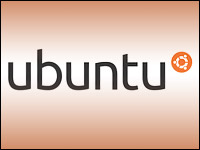
VMware is introducing an open source version of its View product — specifically, an open source client for virtual desktop infrastructure aimed at the data center.
Called “VMware View Open Client,” this release is largely a partner or ecosystem play for the company, pushing out the VMware View source code to partners to make it easier for them to customize their own applications or build new devices around the VMware source code, Jerry Chen, senior director of enterprise desktop virtualization, told LinuxInsider.
“We have several partners that make thin clients today and they run either a custom version of their own OS or Linux on these devices,” he said. By offering the View in open source, “we anticipate the number of companies that work with View will increase and that it will also increase the capability range for customers and partner by allowing development to happen on their schedule, not ours.”
The offering is also a step toward realizing the company’s vision of a “universal client” that can support multiple environments, he added.
Chip PC, Devon IT, HP, Novell, Sun Microsystems and Wyse Technology are among the partners that will be using the source code to bring new thin clients certified for VMware View to market.
The Specs
VMware View Open Client is available under the GNU Lesser General Public License version 2.1 (LGPL v 2.1). Some of the features included in this release support secure tunneling using SSL, two-factor authentication with RSA SecurID, Novell Suse Linux Enterprise Thin Client Add-On RPM package and a full command line interface.
USB redirection, multiple desktop sessions and multimedia redirection are not available in this release, however.
Market Maker?
The offering, though, is hardly a market marker for the virtualization space — although it sets a positive precedent, Charles King, principal with Pund-IT, told LinuxInsider. “Right now the virtual desktop market is still very much in its infancy.” Areas where such developments would likely catch on include those thin client environments that have already proven themselves financially viable: contact centers, for instance, or educational institutions that have heavy computer lab use. In the latter scenario, colleges can use virtual desktops to offer several different computing classes without having to spend much on hardware, King explained.
“As the open source market for virtual desktop grows, of course, demand for open source versions of VDI will grow as well,” he added.
VMware points to recent statistics from Gartner that suggest that demand is indeed poised to rise. Gartner is projecting that approximately 50 million user licenses for hosted virtual desktops will be purchased by 2013. Also, the thin-client terminal will account for about 40 percent of user devices for hosted virtual desktop deployment.
Having an engaged partner community will likely hasten this demand along, Bernard Golden, founder of Hyper Stratus, a virtualization and cloud computing consulting company, and author of Succeeding With Open Source, told LinuxInsider.
“It is a way for VMware to better enable its partners to do their own thing. VMware is successful, but it has a limited bandwidth to work with any one partner,” he said. Also, as typically happens when a company provides the source code to third-party developers, “this move will unleash innovation around the WMware product line.”
View Open Client dovetails with a release that VMware’s competitor, Citrix, made several days ago, Golden also pointed out — an indication that competition in this space is growing. Citrix and Intel announced a joint endeavor to develop new client-side hypervisor that runs directly on end users’ PCs or laptops. This new client hypervisor will be made available to PC manufacturers and enterprises and allow IT professionals to dynamically stream a centrally managed corporate desktop and related applications, into a client-based virtual machine, according to Citrix. “There are a lot of exciting developments happening now with this technology,” Golden said.











































